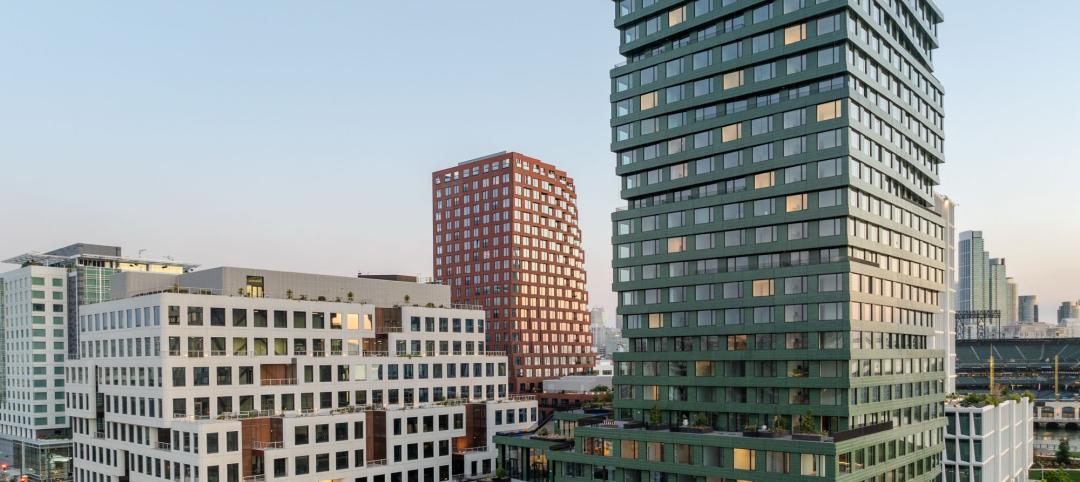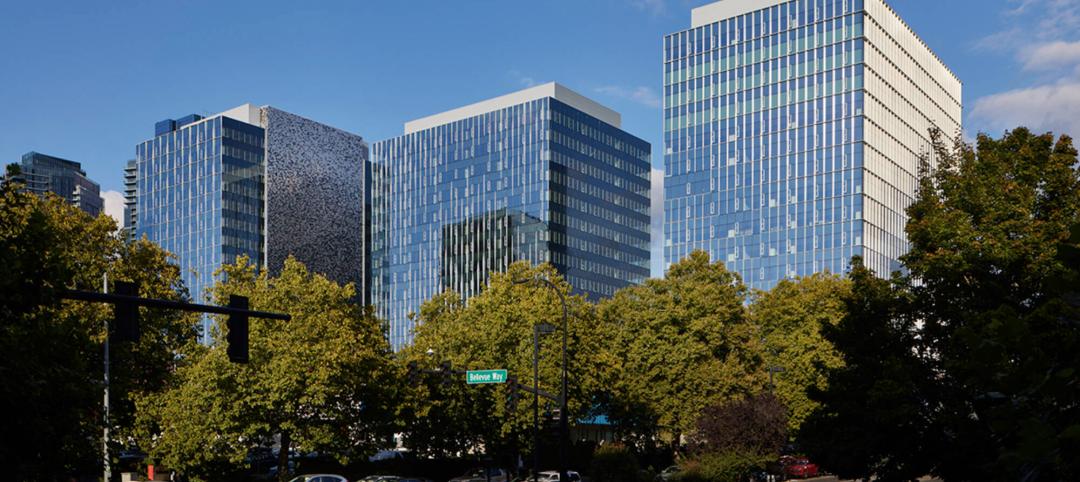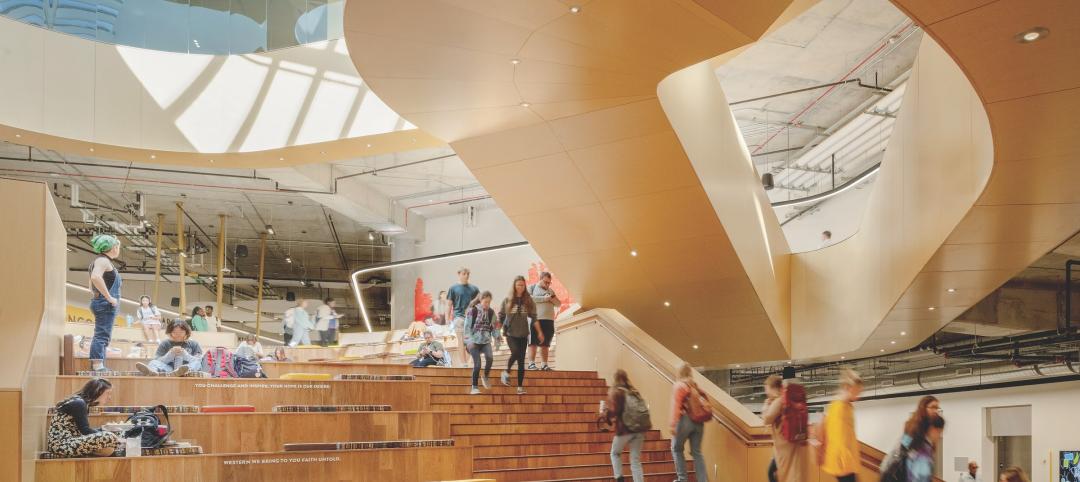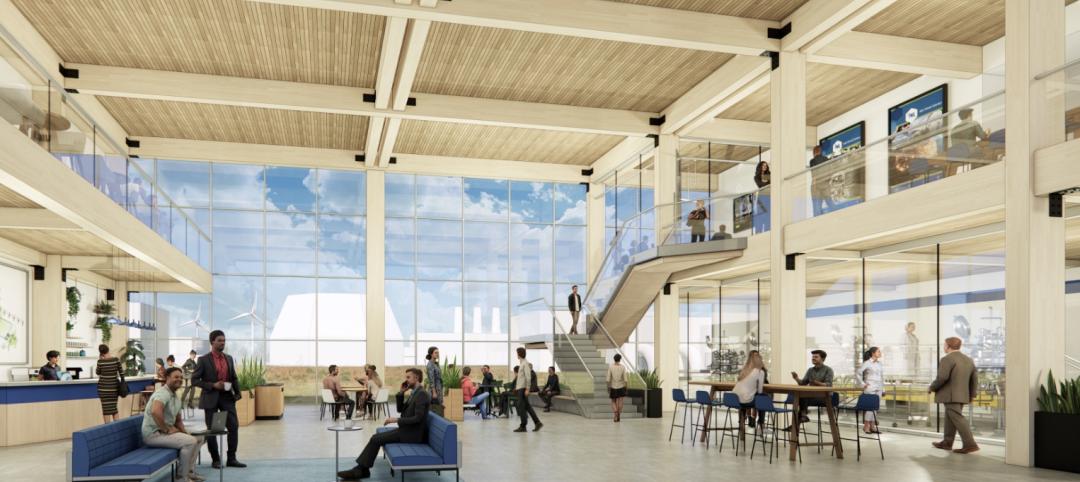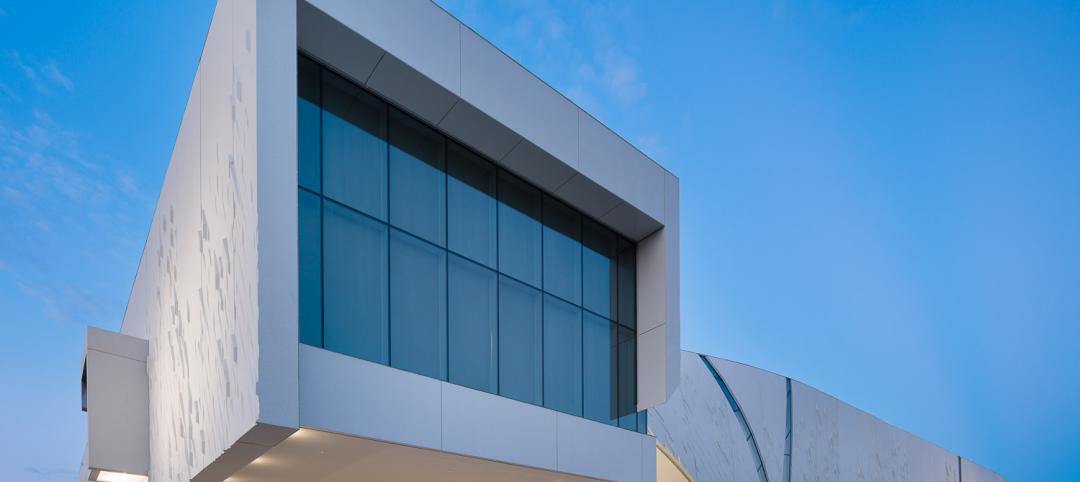Much of the spirited discussion around LEED v4 has been centered on the Materials & Resources Credit, Building Products Disclosure and Optimization – Material Ingredients—especially with regard to building products containing substances that could be toxic to humans or the environment.
At least one voice in the wilderness is shouting for greater attention to another huge change in LEED: the shift to ASHRAE 90.1-2010 as the new reference standard for Energy & Atmosphere prerequisites and credits. “That’s the real story in LEED v4, from an MEP point of view,” says Scott Bowman, PE, LEED Fellow. “The change to 90.1-2010 makes v4 much more rigorous.”
Bowman, who recently retired as Corporate Sustainability Leader at KJWW Engineering Consultants (where he was involved in 119 LEED-certified projects), says Building Teams need to start warning their clients that it’s going to be a lot tougher to reach LEED Gold or Platinum under v4. He says that some of the 14 LEED Platinum projects that he worked on at KJWW might barely squeak by with a Silver or Gold rating under v4. Projects that were Silver or Gold might not even reach certified.
“We need to be working on our clients’ expectations now, because the changes that are coming are going to be significant,” says Bowman, who recently established his own consultancy, Integrated Design + Energy Advisors, known as IDEA. “Our clients should know that we may have to do a couple more runs on the energy modeling for the design”—and that could mean additional fees.
Raising the bar for commissioning in LEED v4
Engineering consultant Scott Bowman says commissioning is a whole new game in LEED v4. The fundamental commissioning and verification prerequisite has added design review as a requirement, but he’s not sanguine about the methodology. “It could mean that an engineer on the project could be reviewing the work of another engineer from the same firm,” says Bowman. “For the review to be of value, there should be an independent third party.”
The Cx prerequisite also requires the Building Team to prepare an operations and maintenance plan, somewhat like a systems manual but less extensive. Bowman warns that preparing this document likely will add to the costs of v4 certification. “Clients should understand that your old rule of thumb on commissioning costs may be out of date.”
Bowman says he’s encouraged by the requirement (in the v4 Cx prerequisite) for exterior enclosures to be included in the owner’s project requirements (OPR) and basis of design. “OPR is the most underutilized management tool in our industry,” he says. “We need to do better OPRs.”
But he’s not crazy about a requirement that a design team member who is not directly involved in the design of the exterior enclosure complete a review of the enclosure design. “It could be just a different person from the same design firm checking the work,” he says. “That’s very squishy.”
Two points are also available under Enhanced Commissioning for envelope commissioning, but Bowman says he is disappointed that some of the MEP services that were required in the Enhanced Cx credit have been put into the Cx prerequisite.
The intent—to give Building Teams a toehold on envelope commissioning—is an honorable one, says Bowman. “I look forward to a future when envelope commissioning is a fundamental, but I don’t think LEED has defined it well enough yet,” he says.
“We had a major jump from 90.1-2004 to 90.1-2010,” says Bowman, a second-generation engineer. He points to data from the Energy Department’s Pacific Northwest National Lab: energy use intensity (EUI) was reduced 4.5% moving from ASHRAE 90.1-2004 to 90.1-2007, but 90.1-2010 brings it down a much more demanding 18.5%.
LEED v4 buildings will have to be 30% better on EUI improvement just to meet the prerequisite, he says, “and they have to go even higher to get EA points.”
Key technical improvements in v4 EA credits, according to Bowman:
• Minimum energy performance has to be 5% above ASHRAE 90.1-2010, 3% for renovation projects; minimum Energy Star rating must be 75 or better.
• Building-level energy metering is now required for all buildings.
• Demand response is now a credit. Projects can earn up to two points for installing systems necessary to participate in a demand response program. Projects located in areas with no demand response program can earn a point by making the building ready to engage in such a program. “The idea of preparing buildings for demand response is a good one,” says Bowman.
Strategies that once were nice-to-haves are now required. “If you have clerestories and skylights, you have to have daylighting controls,” says Bowman. “Before v4, it was a strategy, now it’s a requisite.” Lighting power density is also much more stringent, he says.
Building Teams are going to have to reach higher in their building envelope designs, says Bowman. “You can’t rely on the mechanical/electrical system alone to help you comply with v4,” he warns. “You only get one chance with the envelope. Some of our 100-year-old buildings still have single-pane glass! We need to encourage clients to invest more in good windows, walls, and roofs.”
A similar philosophy guides the use of renewables in LEED v4: the project must meet the requisite energy performance levels before renewables can be applied. “The idea in high performance is: first, use less energy; then, use it efficiently; and then, and only then, make it on site, via renewables,” says Bowman. “You can’t use PVs to make up for a bad building.”
Measurement and verification credits have been heavily modified under v4, in Bowman’s view. “Under LEED 2009, M&V attempted to guide projects to measure energy use on a much more granular basis than before, but it was not implemented very much, and it really was more of an operational credit,” something that should be in LEED EBOM, he says. LEED v4 sets a prerequisite for building-level energy metering. “That’s not going to be a problem for 99% of LEED v4 projects,” says Bowman. The only possible exception: campus projects.

LEED v4 buildings will have to be 30% better on EUI improvement just to meet the new prerequisite. ILLUSTRATION: COURTESY PNNL
Bowman also likes Credit EAc3, Advanced Energy Metering, one of the credits that replaced M&V and can earn a point for metering all energy end uses representing 10% or more of total energy use in the building. Meters must be connected to the building automation system; data must be logged at appropriate intervals and stored for 36 months. “This is a good step, to encourage energy metering,” he says. “The cost of these devices has been coming down dramatically, and this will become standard among higher-level clients.”
Bowman reminds Building Teams to keep their clients posted on the energy components of LEED v4. “The energy side is where the v4 story is,” he says. “If I had a criticism of LEED, it is that we didn’t have as much of a jump in energy requirements between LEED 2.2 and LEED 2009. We really didn’t push the technology that far.”
LEED v4 does.
Scott Bowman (bowmansc.scb@gmail.com) was scheduled to present his views on LEED v4 at BuildingCHICAGO/Greening the Heartland. He will be inducted as a LEED Fellow at Greenbuild on October 23.
Related Stories
AEC Tech Innovation | Oct 8, 2024
New ABC technology report examines how AI can enhance efficiency, innovation
The latest annual technology report from Associated Builders and Contractors delves into how artificial intelligence can enhance efficiency and innovation in the construction sector. The report includes a resource guide, a case study, insight papers, and an essay concerning applied uses for AI planning, development, and execution.
Healthcare Facilities | Oct 8, 2024
Herzog & de Meuron completes Switzerland’s largest children’s hospital
The new University Children’s Hospital Zurich features 114 rooftop patient rooms designed like wooden cottages with their own roofs. The project also includes a research and teaching facility.
Mixed-Use | Oct 7, 2024
New mixed-use tower by Studio Gang completes first phase of San Francisco waterfront redevelopment
Construction was recently completed on Verde, a new mixed-use tower along the San Francisco waterfront, marking the end of the first phase of the Mission Rock development. Verde is the fourth and final building of phase one of the 28-acre project that will be constructed in several phases guided by design principles developed by a design cohort led by Studio Gang.
Brick and Masonry | Oct 7, 2024
A journey through masonry reclad litigation
This blog post by Walter P Moore's Mallory Buckley, RRO, PE, BECxP + CxA+BE, and Bob Hancock, MBA, JD, of Munsch Hardt Kopf & Harr PC, explains the importance of documentation, correspondence between parties, and supporting the claims for a Plaintiff-party, while facilitating continuous use of the facility, on construction litigation projects.
Glass and Glazing | Oct 7, 2024
Pattern language: An exploration of digital printing on architectural glazing
Architectural Glazing has long been an important expressive tool which, when selected and detailed thoughtfully, can contribute to the successful transformation of architectural concepts to reality.
University Buildings | Oct 4, 2024
Renovations are raising higher education campuses to modern standards
AEC higher ed Giants report working on a variety of building types, from performing arts centers and libraries to business schools. Hybrid learning is seemingly here to stay. And where possible, these projects address wellness and mental health concerns.
AEC Tech | Oct 3, 2024
4 ways AI impacts building design beyond dramatic imagery
Kristen Forward, Design Technology Futures Leader, NBBJ, shows four ways the firm is using AI to generate value for its clients.
Laboratories | Oct 2, 2024
Trends in scientific research environments: Q&A with Flad's Matt McCord
As part of an ongoing series, Matt McCord, AIA, NCARB, LEED AP BD+C, Associate Principal with Flad Architects, discusses the future of the scientific workplace.
Museums | Oct 1, 2024
UT Dallas opens Morphosis-designed Crow Museum of Asian Art
In Richardson, Tex., the University of Texas at Dallas has opened a second location for the Crow Museum of Asian Art—the first of multiple buildings that will be part of a 12-acre cultural district. When completed, the arts and performance complex, called the Edith and Peter O’Donnell Jr. Athenaeum, will include two museums, a performance hall and music building, a grand plaza, and a dedicated parking structure on the Richardson campus.
Data Centers | Oct 1, 2024
10 biggest impacts to the data center market in 2024–2025
While AI sends the data center market into the stratosphere, the sector’s accelerated growth remains impacted by speed-to-market demands, supply chain issues, and design innovation necessities.





